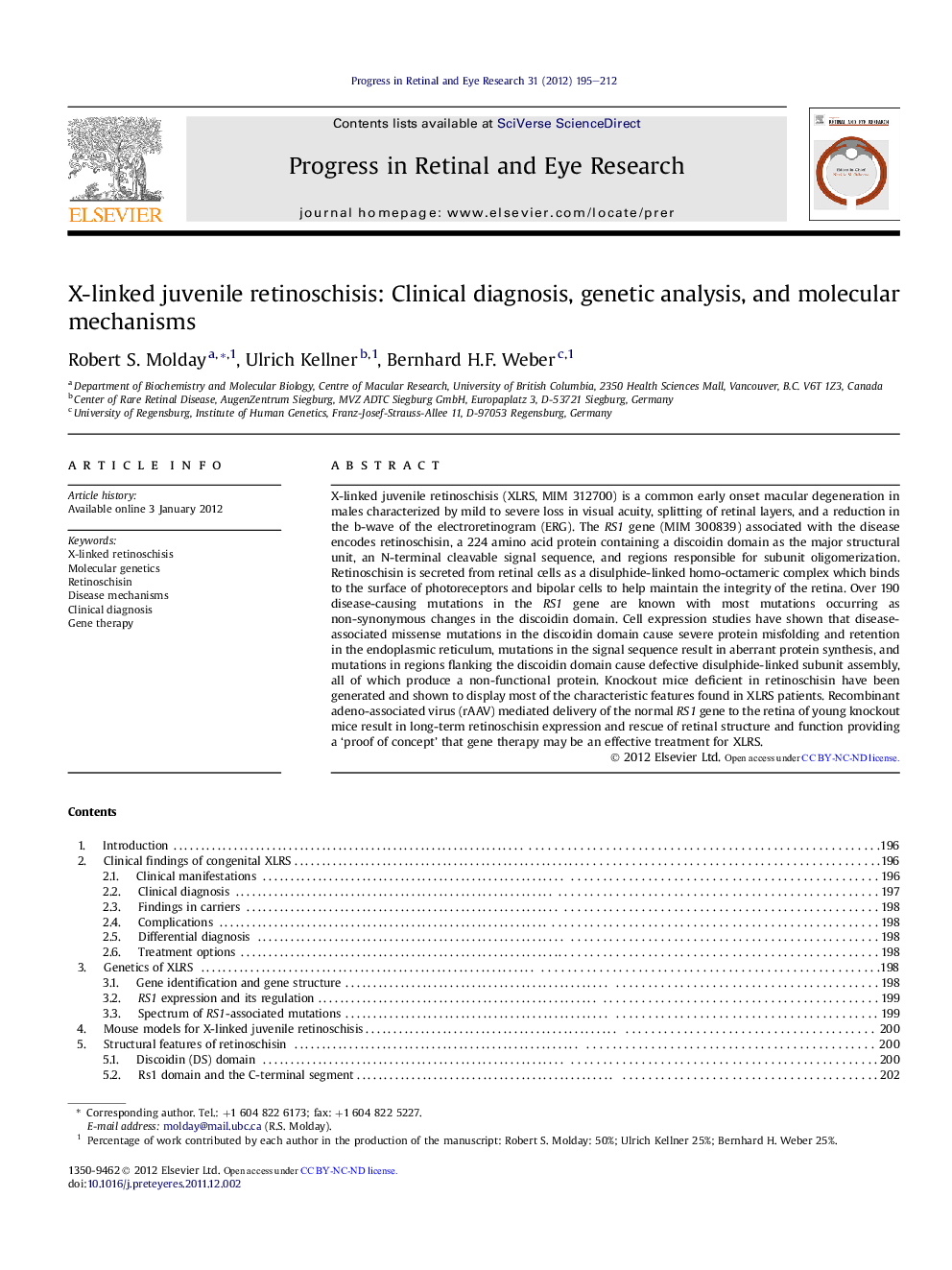| Article ID | Journal | Published Year | Pages | File Type |
|---|---|---|---|---|
| 6202776 | Progress in Retinal and Eye Research | 2012 | 18 Pages |
X-linked juvenile retinoschisis (XLRS, MIM 312700) is a common early onset macular degeneration in males characterized by mild to severe loss in visual acuity, splitting of retinal layers, and a reduction in the b-wave of the electroretinogram (ERG). The RS1 gene (MIM 300839) associated with the disease encodes retinoschisin, a 224 amino acid protein containing a discoidin domain as the major structural unit, an N-terminal cleavable signal sequence, and regions responsible for subunit oligomerization. Retinoschisin is secreted from retinal cells as a disulphide-linked homo-octameric complex which binds to the surface of photoreceptors and bipolar cells to help maintain the integrity of the retina. Over 190 disease-causing mutations in the RS1 gene are known with most mutations occurring as non-synonymous changes in the discoidin domain. Cell expression studies have shown that disease-associated missense mutations in the discoidin domain cause severe protein misfolding and retention in the endoplasmic reticulum, mutations in the signal sequence result in aberrant protein synthesis, and mutations in regions flanking the discoidin domain cause defective disulphide-linked subunit assembly, all of which produce a non-functional protein. Knockout mice deficient in retinoschisin have been generated and shown to display most of the characteristic features found in XLRS patients. Recombinant adeno-associated virus (rAAV) mediated delivery of the normal RS1 gene to the retina of young knockout mice result in long-term retinoschisin expression and rescue of retinal structure and function providing a 'proof of concept' that gene therapy may be an effective treatment for XLRS.
